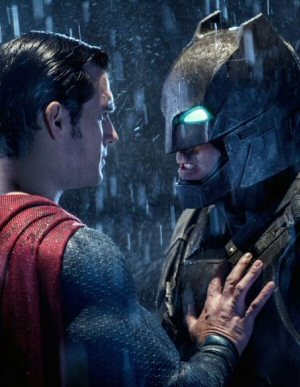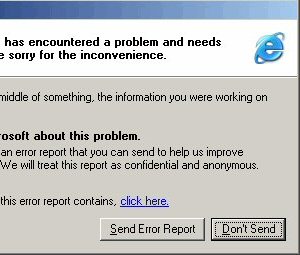The origin and evolution of horror movie franchises is rife with commentary, observations, and analysis. Some of it is even good. The sub-genre of “slasher” movie might be the most visible category, although personally I don’t view slasher movies as distinct, per se. The things that horrify us, or startle us, or discomfit us provide horror categories as far as the fundamental nature of a film goes. (Although, I will admit that genres and sub-genres as we think of them can be very useful when trying to find something to watch on a streaming service. Sometimes you want gory kills; sometimes you want creeping dread, sometimes you want commentary and comedy.) The fundamentals of horror, I think, are more closely associated with concepts like “conflict types.” You know, “man vs. nature,” “man vs. man,” and “man vs. himself.” While it would be easy to just say, “Well, sure; that’s ‘survival horror,’ ‘slasher,’ and ‘psychological'” you have to acknowledge the incredible number of caveats you would have to employ to subsequently categorize every horror movie. All of which is to point out viewing slasher movies, especially the big franchises, through the lens of genre isn’t useful for ALL analysis.
The “Big Three,” Halloween, Friday the 13th, and A Nightmare on Elm Street should be recognized both as significant and important (their longevity as franchises can attest to this), but also not the first in almost any regard. As mentioned before, an important caveat should be inserted for Halloween as arguably the “first MODERN” slasher, if only because that movie’s very existence and success inspired Friday the 13th, and the success of these two movies subsequently prompted the creation of A Nightmare on Elm Street. But the creation of Halloween itself was prompted primarily by Producer Irwin Yablans believing there was untapped potential in the horror marketplace to follow up 1973’s hit The Exorcist. Yablans and his financier, Moustapha Akkad had come up with the idea of a faceless, unstoppable killer murdering babysitters on Halloween night. They asked John Carpenter to create the details and direct (and eventually do many things, as befits a low-budget production) after viewing Carpenter’s Assault on Precinct 13. Carpenter likely formed the basis of his Halloween plot after asking director Bob Clark what he would do as a sequel to 1974’s Black Christmas. (Clark, incidentally, has made it clear he WAS NOT going to make a sequel to Black Christmas and had no interest in or ownership of the ideas he shared with Carpenter. Nevertheless, they involved an escaped mental patient returning to the location of the previous murders and continuing his “work.”)

None of this, of course, is to short-change John Carpenter. These are just all “ideas” that were used. Carpenter created the narrative and the style, along with Debra Hill and Dean Cundey. Halloween became a huge hit. John Carpenter had no plans for, nor intention to create, a sequel. The disappearance of the killer’s (Michael’s) body after being shot repeatedly by Dr. Loomis was meant only as the ultimate repetition of the theme of the killer being “unstoppable.” You will find many accounts that the ending was changed because Yablans and Akkad wanted a sequel. While the timeline between finishing the film and its box office success is short, I can find no evidence of this (other than the verbal claims). Re-shooting some of the ending of the first movie for Halloween II was done to change Loomis’ reaction to Michael’s disappearance from the originally-written “resigned acceptance” to shock…Michael SHOULD NOT have survived. This, oddly, would contradict with the eventual evolution of the Michael Myers character in the original timeline; but that’s getting ahead of ourselves.
The inspiration for Friday the 13th is quite simple…even more straightforward than Halloween. Halloween had done gangbusters business and Compass International had already started a sequel. Producer and director Sean Cunningham wanted some of that success. He saw an opportunity to increase the gore and excitement (and comedy), compared to the actually pretty-mild and plodding Halloween. AND he had a GREAT TITLE (according to him, and I guess he was right): Friday the 13th. The script was created by Victor Miller, who was involved in a long-lasting lawsuit until 2021 trying to gain the rights of the original movie. Miller created that movie’s story, not Cunningham, and he eventually was awarded ownership of that original story. This means that Miller owns, for example, Pamela Vorhees…and Jason *as a child*. The horror icon Jason the masked killer still belongs to Cunningham, or Paramount, or someone else. There is also some murkiness regarding digital rights, I understand. I’m sure this all plays into why direct sequels or reboots haven’t been made: you have to negotiate around who owns what. But surprisingly for how slip-shod, low-budget, and money-grab-oriented this production was, there were *once again* NO plans for a sequel…until Friday the 13th made nearly $60 million off a budget of $550,000.

In a familiar setting, the production of 1984’s A Nightmare on Elm Street was motivated by the success of the Halloween and Friday the 13th films. New Line Cinema, a film distributor, wanted to get into film production and figured horror movies, especially these popular slasher movies where you threw around copious blood, featured teenagers having sex, and centered around a (what became known as a) “final girl” surviving the attack of some person using sharp objects on other humans; was the easiest way in. They got lucky in connecting with veteran horror director Wes Craven who had been forming an idea based on some real-life incidents of Hmong refugees in Los Angeles suffering such severe nightmares they refused to sleep. Several died. These occurrences, while noted in the Los Angeles Times newspaper, never received the study they needed at the time, and so were then, and continue to be mostly “mysterious.” Combined with, according to Wes Craven, the keyboard intro and some lyrics from Gary Wright’s “Dreamweaver,” these newspaper stories formed the basis for his screenplay. Craven had been unable to sell the idea to multiple studios before New Line agreed. They had difficulty funding the $1.1 million production, but that’s a separate story. Despite that, this is the only film of the original three to have had a sequel approved BEFORE it debuted. Wes Craven had written a stand-alone film with a clear ending. That is, when Nancy tells Fred Krueger he no longer scares her and turns her back on him (and he immediately dissipates in a puff of logic), that’s THE END of the movie. The following add-on scene, which exists solely to show Freddy is still around and functioning *somehow* was insisted on by New Line Cinema, who had a pretty good idea this film would be a success. Craven himself, who had utilized several personal elements of his life in the movie, was done with the franchise for years…until he had an idea that would lead to a new generation of horror movies.

As I’ve shown, none of these movies had sequels in mind during their creation. Halloween and A Nightmare on Elm Street don’t even define their “slasher.” Halloween is more about the *idea* that Michael Myers represents; the faceless unstoppable killer of both the innocent and the damned. A Nightmare on Elm Street explores the line between dreams and the waking world. Krueger is clearly shown to have no more effect that what you give him, even while showing that if you truly fear him, he *can* kill you in your dreams. The idea that there was a *real* Fred Krueger in the history of the town is something that could be explored, but is no more than a legend any given person could know and share if the viewer even gives it some thought. And of course in Friday the 13th the slasher is, essentially, just a serial killer. While the history of Pamela Vorhees is ripe for storytelling (if you can get around the legal requirements, and apparently you can), she is still just a vengeance-minded, probably-mentally-unhinged killer. Freddy is shown to be imaginary, Vorhees has her head chopped off (her alleged son, Jason, is shown to be a product of bad dreams), and Michael disappears because we’re all still afraid of what we can’t control. He’s still out there because there are still serial killers in the shadows.
People tend to set Halloween aside as “different,” and I can understand that. Unlike the other movies it inspired, Halloween is not bloody. Violent at times, but certainly not gory. There is a lot of suspense; the movie is built to capitalize on the wait for the next bit of action. A Nightmare on Elm Street is considered more intelligent and thoughtful. Later films were known more for the Freddy Krueger character in his own right, and bizarre effects. Friday the 13th, in a manner of speaking, is the purest of the three. This movie does exactly what the producers wanted. The series quickly became known as the exemplar of the sex-and-blood slasher series. Later Halloween movies overwhelmingly, in it’s first incarnation, embraced the idea that underlined all the sequels, despite not really being present in the first movie: paranormal origins.

All three of these franchises began with a single movie meant to capitalize on the success of horror films, especially low-budget horror, throughout the 1970’s. There was a perception of the “slasher” genre emerging; something differentiated from the haunted house and the ghost. The motive of the killer was broad or even undefined, at the very least it was *not* personal. But of course this is where we have to revisit my first statements. Pamela Voorhees *is* a revenge killer…but she defines her pool of targets not as the people who let her son drown, but all “camp councilors” more interested in having sex than in safeguarding the children in their care. Michael Myers, who has *no relationship to “Laurie Strode” in the first movie,* DOES still return to his birthplace and site of his first murder AND seems to be fixated on killing babysitters. This is explained primarily by colliding and changing production and writing elements rather than later story reveals, but it *is* an element of the released film. A Nightmare on Elm Street tries to tell a truly mysterious story but even as Craven has Krueger able to be controlled and dismissed by the final girl’s thoughts, still gives the terror a name and a possible motivation of vengeance if the dream world and reality can be bridged narratively.
The argument, then; would be that the kills are more important than the story. After all, none of these characters *had* a fully-realized backstory until their sequels came along. Sequels that had to either undo what was done in the first movie; redefine it or go around it, just to exist. I mean, technically, Michael survived. He *could* just do more of the same, and that’s kind of what they went with. But clearly the creators of all three slasher stories felt more was needed to explain why they had made it to another movie. Michael got motivation in the second movie, Freddy started the trip to supernatural origins, and Friday the 13th brought someone back from the dead (not as literally as they would in later films)…just not Pamela Vorhees. The reason the production companies made these sequels despite this challenge doesn’t need to be said

but it does start the “evolution” part of the story, which I’ll take up next week.
Batman v. Superman Wasn't All Bad

It's not a good movie, but it was made with good intentions and if you look closely you can find a few interesting ideas.
Dear Hollywood: Do a Mash Reboot

Since we're rebooting everything, MASH will probably come up eventually. Here are some casting suggestions.
The Biggest Game Ever

Just how big IS No Man's Sky? What if you made a map of all of its landmass? How big would it be?
Best. Plot Twist. Ever.

Few people remember BioWare's Jade Empire, but it had a unique setting and a really well-executed plot twist.
Trashing the Heap

What does it mean when a program crashes, and why does it happen?
 T w e n t y S i d e d
T w e n t y S i d e d

I had recently watched the videos on the Alien franchise over on SF-Debris. I recall him making a claim that Alien introduced some of the now common tropes of the slasher movie genre (such as the killing the cast off one by one plot structure). It sounds to me like it could be true, but I don’t know if that fits into the genre’s timeline, so I’m not sure. Was Alien really that early in the genre?
And would most people count it as part of it, or is the scifi aspect too different?
From a Google search: Halloween 1 was 1978, Alien was 1979, Friday the 13th was 1980. Nightmare on Elm Street was 1984, after multiple sequels for Halloween and Friday, but still before Aliens.
N1gga at this point diss yourself, I don’t even know what to bully you on.